OSE Featured Alumni
 Dr. Chih-Feng Wang
Dr. Chih-Feng Wang
Optical Science and Engineering, 2019
Chih-Feng Wang completed his PhD in optical science and engineering at the University of New Mexico in 2019 under the supervision of Dr. Terefe Habteyes. Subsequently, he joined Pacific Northwest National Laboratory (PNNL) as a postdoctoral researcher under the guidance of Dr. Patrick ElKhoury. Currently serving as a Physicist in PNNL's Physical Sciences Division, Chih-Feng specializes in pioneering the development of advanced multimodal hyperspectral micro/nanoscopy techniques. These techniques exhibit exceptional spatial-temporal-spectral sensitivity, particularly in the study of plasmonic nanomaterials and 2D materials. Chih-Feng's research endeavors are dedicated to broadening the capabilities and applications of near-field techniques, with a focus on pushing the boundaries of exploration in the nano-world.
Dr. Christopher Wilcox
Optical Science and Engineering, 2009
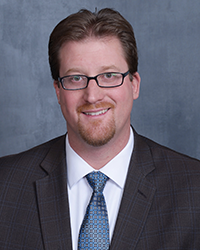
Dr. Erum Jamil
Optical Science and Engineering, 2017

Dr. Erum Jamil, a Fulbright grantee, completed her PhD in 2017 from the University of New Mexico's Optical Science and Engineering Program under the guidance of Prof. Majeed Hayat. Her dissertation was centered on the design, modeling, and development of Avalanche Photodiodes for the infrared regime. Dr. Jamil holds an engineering degree from the National University of Computer & Emerging Sciences in Pakistan. She also received the prestigious European Union Erasmus Mundus grant, enabling her to pursue a dual master's degree in Optics, and Photonic Engineering at Institut D’Optique in France and Politechnika Warszawska in Poland.
Following her PhD, Dr. Jamil continued her career in academia as an Assistant Professor at the International Islamic University, Pakistan, and later became the Chairperson of the Department of Electrical Engineering (FC). She was also associated with the Centre for Advanced Electronics & Photovoltaic Engineering at IIU, where she worked on advanced photonic devices and led as PI, a crucial COVID-19 project based on her photonics engineering and computational modeling expertise.
Currently, Dr. Jamil is a research fellow, working at the Center for High Technology Materials, UNM, in USA. There, she continues her research on state-of-the-art photonic devices and mentors graduate students. She has amassed considerable experience in developing and applying novel photonic devices for the infrared range, including quantum-dot sources for single-photon emitter applications, superconducting nanostripe single-photon detectors, silicon quantum photonic integrated circuits, and optical characteristics in nanoparticles, in infrared and near infrared regime.
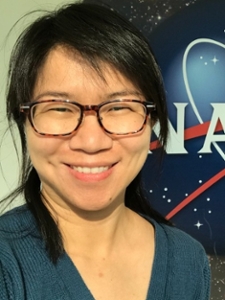 Xiaozhen Xu
Xiaozhen Xu
Optical Science and Engineering, 2014
Xiaozhen Xu received her PhD from the University of New Mexico's Optical Science and Engineering Program in 2014, working with Dr. Jean-Claude Diels. Her thesis work developed a high power UV laser system for laser induced discharge. Since graduation, she has accumulated a broad range of industrial R&D experiences in the development and applications of advanced laser technologies. She is currently a laser system engineer of SSAI, supporting various programs at NASA Goddard Space Flight Center in Maryland, including development of laser system for the LISA program.
Aram Gragossian
Optical Science and Engineering, 2017
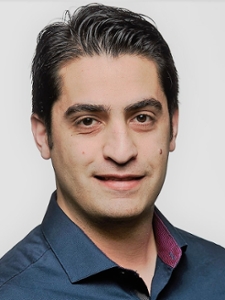
David Valdés
Optical Science and Engineering, Spring 2019

Optical Science and Engineering, Spring 2019.
David Valdés earned his M.S. in Optical Science and Engineering at the University of New Mexico (UNM) in 2019 under the supervision of Dr. Jean-Claude Diels, author and Professor of Physics and Astronomy at UNM. David worked as a part-time student for the duration of his master’s program.
David currently serves as an Interim Associate Dean in the School of Adult and General Education at Central New Mexico Community College (CNM).
David taught math for two years at West Mesa High School before beginning work as a member of the full-time math faculty at CNM in the School of Adult and General Education. In addition to his faculty position, he also worked as a CNM Presidential Fellow, and Faculty Senate Chair.
After completing his master’s degree at UNM, David was offered an interim associate dean position to fill one of two positions that became vacated. In this role, he has helped see the college through the ups and downs of navigating COVID-19 while managing faculty schedules and serving on various college committees. David also directs the Adult Basic Education program which oversees state and federal grants to help students learn English and attain their high school equivalency. Complementing his work at CNM, David serves as a full board member of the Workforce Connection of Central New Mexico, which strives to address the workforce needs in the central region.
Scott Diddams
Optical Science and Engineering, 1996
Scott Diddams is a Fellow of the National Institute of Standards and Technology (NIST) and an Adjoint Professor at the University of Colorado, where he carries out experimental research in the fields of precision spectroscopy and metrology, nonlinear optics, microwave photonics, and ultrafast lasers. He received the Ph.D. degree from the Optical Science and Engineering Program at University of New Mexico, (UNM) in 1996. His research advisor at UNM was Professor Jean Claude Diels. From 1996 through 2000, he did postdoctoral work at JILA, NIST, and the University of Colorado. Since 2000, Diddams has been a research physicist at NIST where he has pioneered the development of optical frequency combs and their use in optical clocks, tests of fundamental physics, novel spectroscopy in the visible and mid-infrared, and ultralow noise frequency synthesis. In recent years, special attention has been given to infrared frequency comb sources as well as high repetition rate laser-based and microresonator frequency combs, which are being explored for applications in microwave photonics and astronomy. Among many awards, Dr. Diddams received the Department of Commerce Gold and Silver Medals for “revolutionizing the way frequency is measured”, as well as the Presidential Early Career Award in Science and Engineering (PECASE), and the IEEE Rabi award. He is a Fellow of the Optical Society of America and the American Physical Society and a Senior Member of IEEE.
Jeffrey W. Nicholson
Optical Science & Engineering, UNM 1991
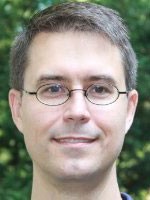
Jeffrey W. Nicholson earned his Ph.D. in Optical Sciences at The University of New Mexico (UNM) in 1997. Nicholson was a student of Dr. Wolfgang Rudolph, the current Department Chair and Regents’ Professor of Physics & Astronomy UNM. He gained his Bachelor of Science in Physics at the University of Houston in 1991.
Currently Dr. Nicholson is a Distinguished Member of Technical Staff at OFS Laboratories, specializing in laser physics, optical fibers, and fiber lasers. OFS Telecommunications is a global designer, manufacturer and provider of optical fiber, fiber optic cable, FTTx, FTTH, optical connectivity and specialty photonics products. In 2017, Dr. Nicholson was elected as an OSA fellow.
Victor L. Gamiz
Optical Science & Engineering, UNM 1995

Victor L. Gamiz earned his Ph.D. in Physics & Optical Science at The University of New Mexico (UNM) in 1995, under the supervision of Sudhakar Prasad, who is a Professor and the Associate Chair for Graduate Affairs in Physics and Astronomy at UNM. He achieved a Master of Science in Physics at UNM in 1989, and a Bachelor of Science in Physics from California State Polytechnic University - Pomona in 1975.
Currently, Dr. Gamiz is the Principal Investigator for the U.S. Air Force Research Laboratory (AFRL) and director of the Space Situational Awareness mission at AFRL/Space Vehicles in Albuquerque. He is also an Assistant Adjunct Professor with the Air Force Institute of Technology. In 2017, Dr. Gamiz was elected as an OSA Fellow.
Col. Russell Teehan
Optical Science & Engineering, UNM 1999
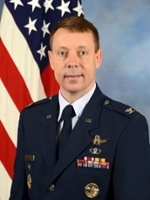
Col. Russell Teehan earned his Ph.D. in Physics & Optical Science at The University of New Mexico (UNM) in 1999, under the supervision of Wolfgang Rudolph, who is a Professor and the Chair of the UNM Physics and Astronomy department at UNM.
Currently, Col. Russell Teehan is the director of the Air Force Research Laboratory Space Vehicles Directorate and the commander of Phillips Research Site at Kirtland Air Force Base, N.M. He leads a team of 809 military, civilian and on-site contractors who comprise the nation's center of excellence for military space science and technology, research and development, as well as advanced technologies integration and demonstration. His organization manages an annual budget of $307 million, focused on enduring Air Force space missions: communications; position navigation and timing, missile warning, space situational awareness, and defensive counter space.
Ganesh Balakrishnan
Optical Science & Engineering, UNM 2006

Dr. Ganesh Balakrishnan earned his Ph.D. in Physics & Optical Science at The University of New Mexico (UNM) in 2003, under the supervision of Kevin Malloy, who was the Vice President of Research and Economic Development at UNM.
Currently, Dr. Balakrishnan is an Associate Professor and Associate Chair for the Department of Electrical and Computer Engineering at UNM. Dr. Balakrishnan’s primary research focus for the past decade has been the growth and characterization of highly mismatched III-Sb compound semiconductors on GaAs and Silicon substrates. The specific contribution made by Dr. Balakrishnan to this area of research is the novel use of interfacial misfit dislocation arrays in enabling low defect-density, bufferless, monolithic integration of III-Sb on GaAs and Silicon substrates for increased antimonide device functionality on mature platforms. His body of work using molecular beam epitaxy has resulted in over 60 peer-reviewed publications, 30 conference presentations and several patents.
Denis Seletskiy
Optical Science & Engineering, UNM 2010
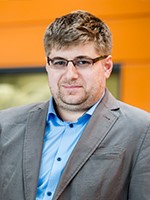
Dr. Denis Seletskiy earned his Ph.D. in Physics & Optical Science at The University of New Mexico (UNM) in 2010, under the supervision of Mansoor Sheik-Bahae, Professor and OSE General Chair at UNM.
Currently, Dr. Seletskiy is an Assistant Professor at the Department of Engineering Physics at Polytechnique Montréal. The primary aim of his research is to develop novel photonics tools and apply them to study quantumness of interacting light and matter toward real world high-technology applications. His other research interests include laser cooling of solids, nonlinear optics, nanophotonics and the development of new tools for optical precision metrology.
Clint Zeringue
Optical Science & Engineering, UNM 2011
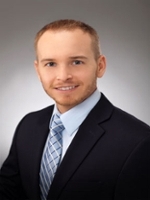
Dr. Zeringue received his Ph.D. with distinction in Optical Science and Engineering from the University of New Mexico in 2011 under the supervision of Dr. Iyad Dajani. His dissertation focused on theoretical and experimental investigations of Stimulated Brillouin Scattering (SBS) mitigation techniques in fiber amplifiers. Dr. Zeringue was awarded two U.S. patents (US 7,764,720 B1, US 8.462.426 B1) based on his SBS suppression techniques, which led to unprecedented output powers in single-frequency Yb-doped fiber amplifiers. He worked as a Laser Research Physicist for the Air Force Research Laboratory (AFRL) where he earned multiple awards including: Scientist of the Quarter and Best Poster Presentation by the USAF Scientific Advisory Board (SAB) for two consecutive years. Dr. Zeringue developed an in-house laser modeling software package which was published in an AFRL success story and was an invited topic at Wolfram Mathematica’s annual international summer program. He earned a postdoctoral fellowship in the Radiation Physics department at the University of Texas MD Anderson Cancer Center, where he developed fiber-optic based sensor technology to monitor radiation dose during cancer treatments.
Dr. Zeringue is currently the founder and principal investigator of ZModDynamics LLC, a startup based in Houston, TX specializing in Optical and Computer Science R&D services. His current research activities include: nonlinear optical phenomenon associated with high power fiber lasers and fiber-optic based sensor technology for in-vivo radiation dose monitoring. Dr. Zeringue serves as a consultant for Radiadyne LLC, a leading medical device company specializing in providing technology for personalized radiation treatment. He is the lead engineer and architect of the OARtracPlus Real-Time Dose Monitoring System, a commercially available medical device which provides gold standard accuracy, real-time pinpoint measurement, and dedicated intracavitary delivery devices to measure physical dose during radiation treatment.Dr. Zeringue is also a member of Phi Kappa Phi (National Honor Society) and Tau-Beta Phi (Engineering Honor Society).

